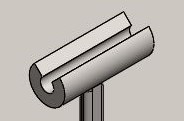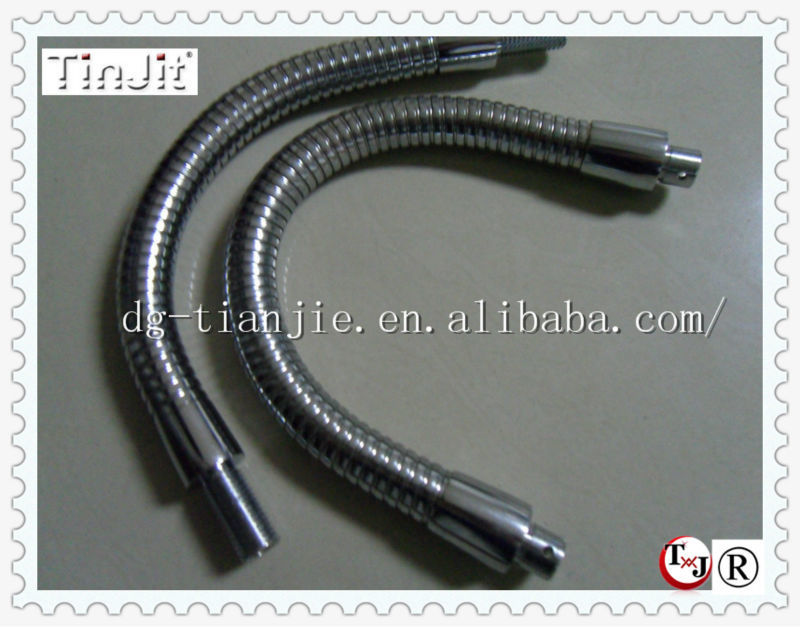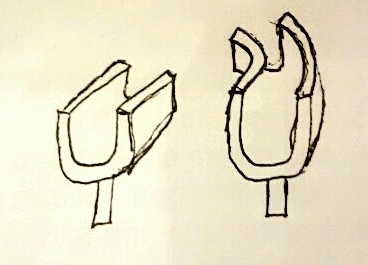If by 'wire cable' you mean a plastic jacket with multiple small stranded insulated copper wires inside, you might be able to make a two-piece plastic thing with a friction hinge or maybe a ratcheting hinge.
If by 'wire cable' you mean a Bowden cable, i.e. a piece of solid music wire sliding inside a coiled steel wire shell with or without a liner, you will need something fairly sturdy in order to resist the cable's tendency to straighten itself.
Lead might be the perfect material for what you want to do, but its presence may scare civilians and/or 'safety people', who come out of the woodwork regularly.
If you can do without the radial 'lay in' feature you have depicted, and can do axial assembly, consider also annealed copper tubing, which in small sizes can be worked with strong fingers, and will withstand a few corrections.
Friction hinges that actually work tend to be fairly bulky.
For reference, I have a couple of mirror extenders that strap onto my rearview mirrors so I can see around a wide trailer. Between the straps and the mirror housings are a couple of articulated struts with friction hinges. The struts are semi-streamlined, with a cross section estimated at 1/2 inch x 1 inch, obround. The friction hinges are maybe 1 inch diameter and 1/2 inch thick (two halves x 1/4 inch thick each), secured by a single central screw. There may be friction hinges of smaller proportions that work, but none come to mind at this instant. I am getting the impression that something that large might not be what you want.
The gooseneck tubing in the photo retains its bent position because it is coiled with some preload between adjacent turns, probably by twisting the preform strip as it is coiled. This preload provides some friction that resists bending, until the metal either yields or wears a bit. They tend to loosen and lose utility after relatively few cycles.
There is a sectional construct sold for positioning coolant streams in machine tools, comprising tubular injection molded bits with ball and socket joints at the ends that allow limited flexibility. The joints are made with an interference fit so they retain position, at least for a while. The interference is tight enough that special pliers are required to connect and disconnect the links, but they might provide something to copy or buy. Those 'coolant hoses' come in several sizes. None that I have seen are thinner than a fat finger.
For further inspiration, wander through a toy store.
I am not kidding; you will find a lot of interesting stuff, much of it fairly well engineered.
Mike Halloran
Pembroke Pines, FL, USA




